Samia Halaby (b.1936 in Jerusalem) is a Palestinian-American artist, activist, and scholar living and working in New York. She was educated in the 1950s in the American Midwest, at a time when abstract expressionism was popular, but female abstract painters were often rejected.
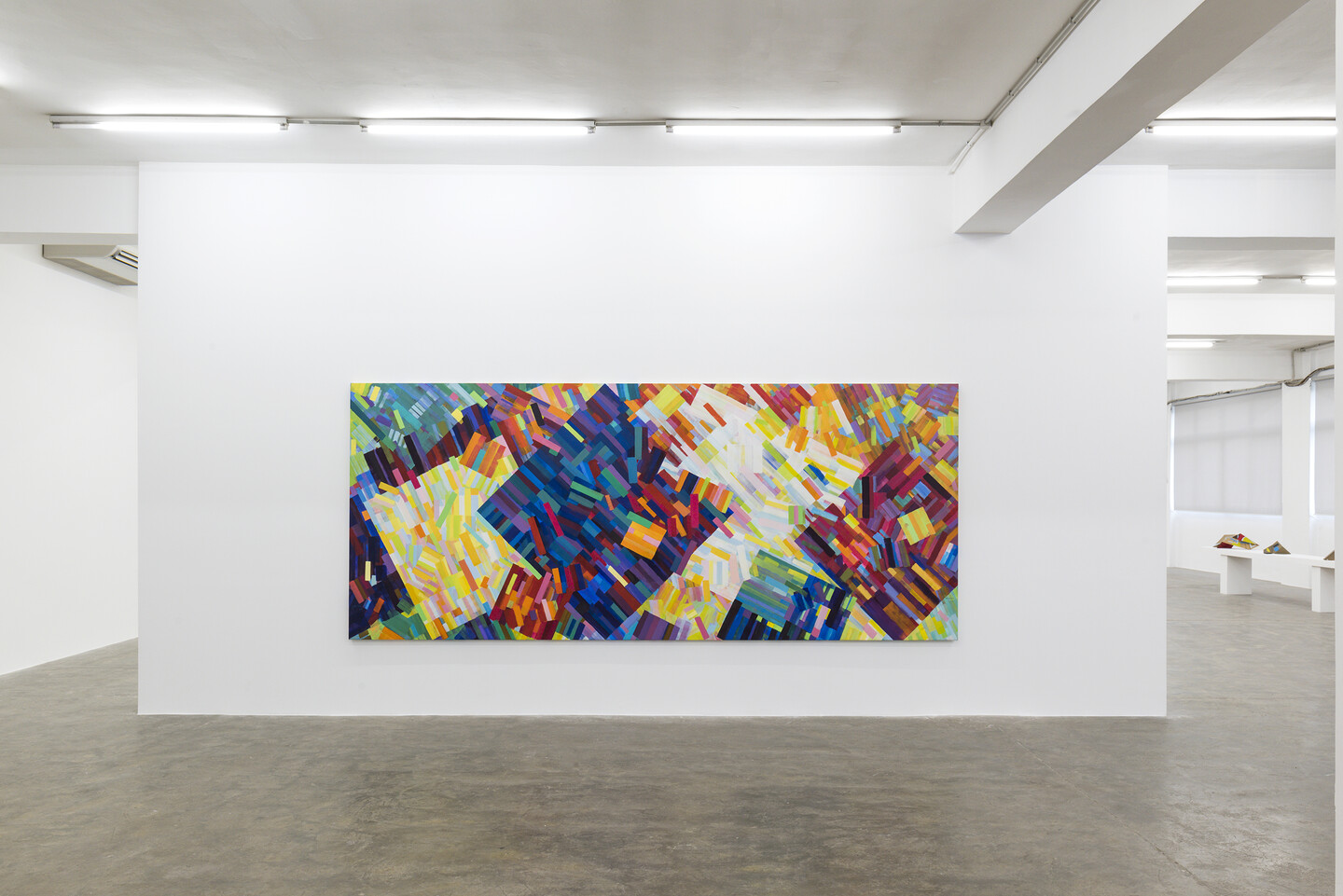
Acrylic on cotton canvas, 188 × 445 cm
In the 1960s she started working with intense colors to construct geometrical shapes, that repeat and spread on canvas surfaces. Over time, the geometric forms transformed into lines and diagonals that defined the dynamics of her compositions, ultimately withdrawing to liberate highly colorful textured brushstrokes.
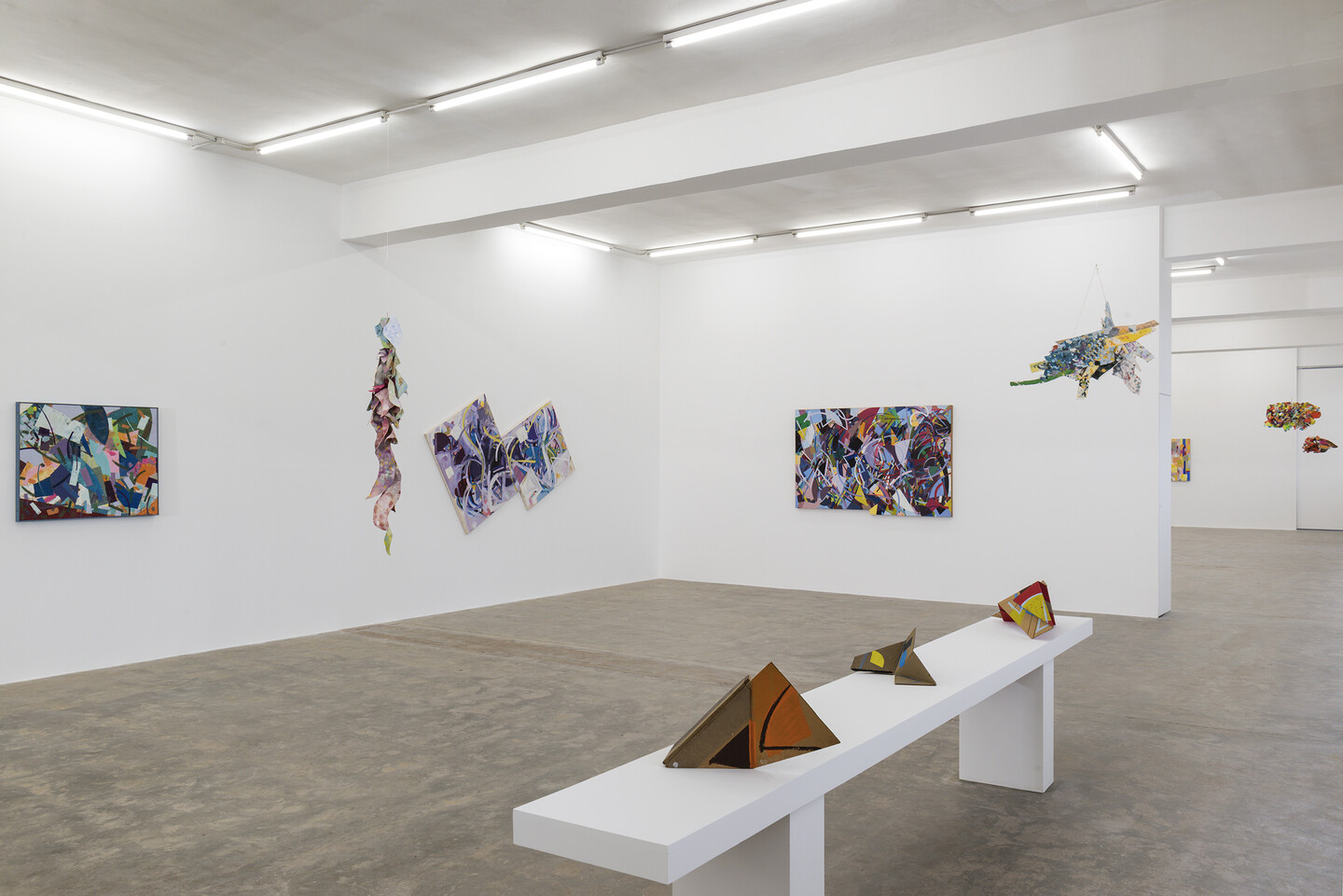
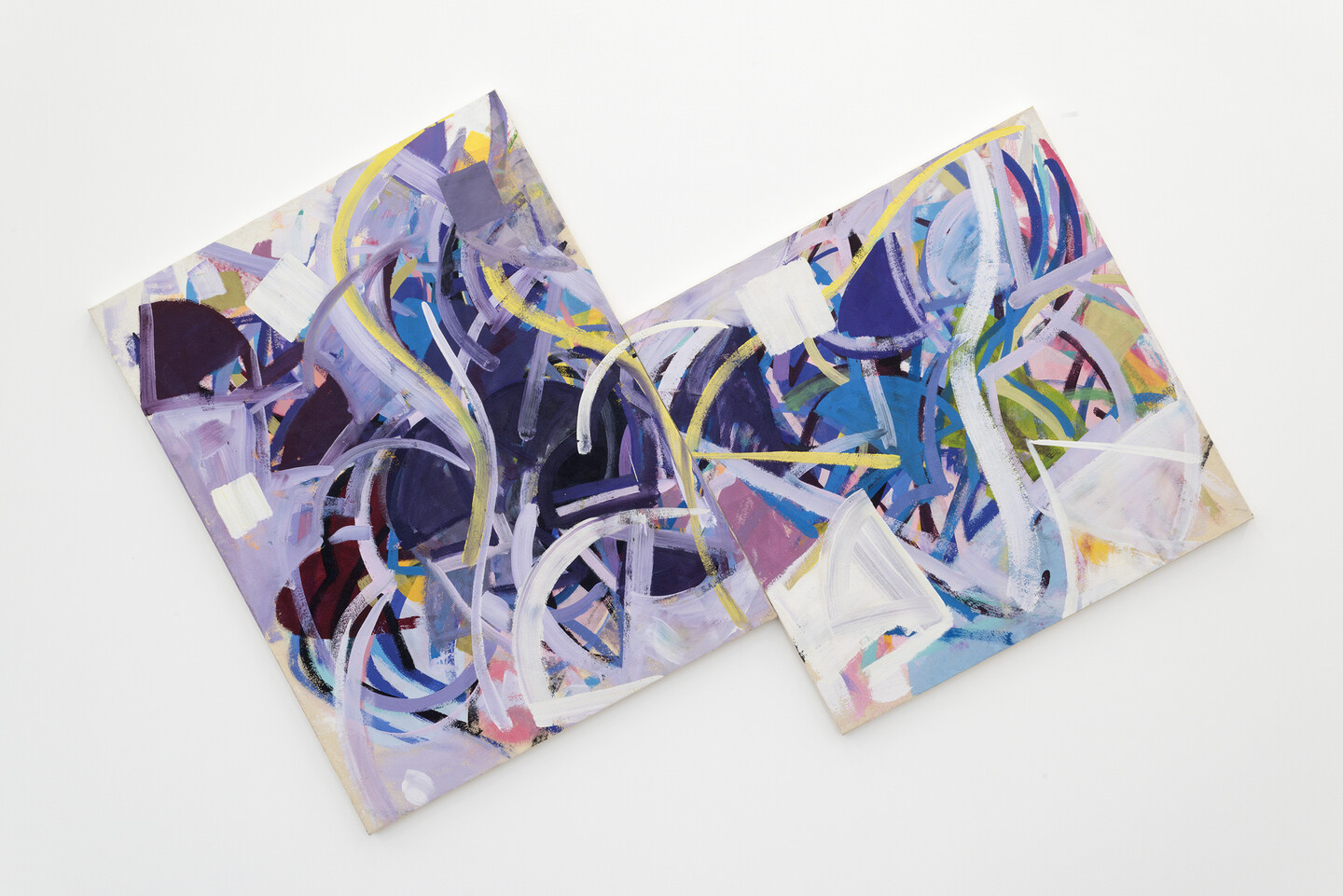
acrylic on canvas, 149 × 233 cm

acrylic on canvas, 106 × 165 cm

oil on canvas, 107 × 122 cm
In her attempt to capture the process of growth and change observed in nature, and inevitably related to the flux of social realities, Halaby develops her distinctive artistic signature: her painting method is based on the visual perception of her environment, translated to canvas using abstract vocabulary, in a radical spirit of experimentation and creativity.
Early in her practice, her works left the traditional rectangular stretched fabric, to become shaped canvases or expansive hanging installations, or even animated digital paintings. In the mid 1980s she coded her own program to create screen-based moving shapes using an Amiga computer.

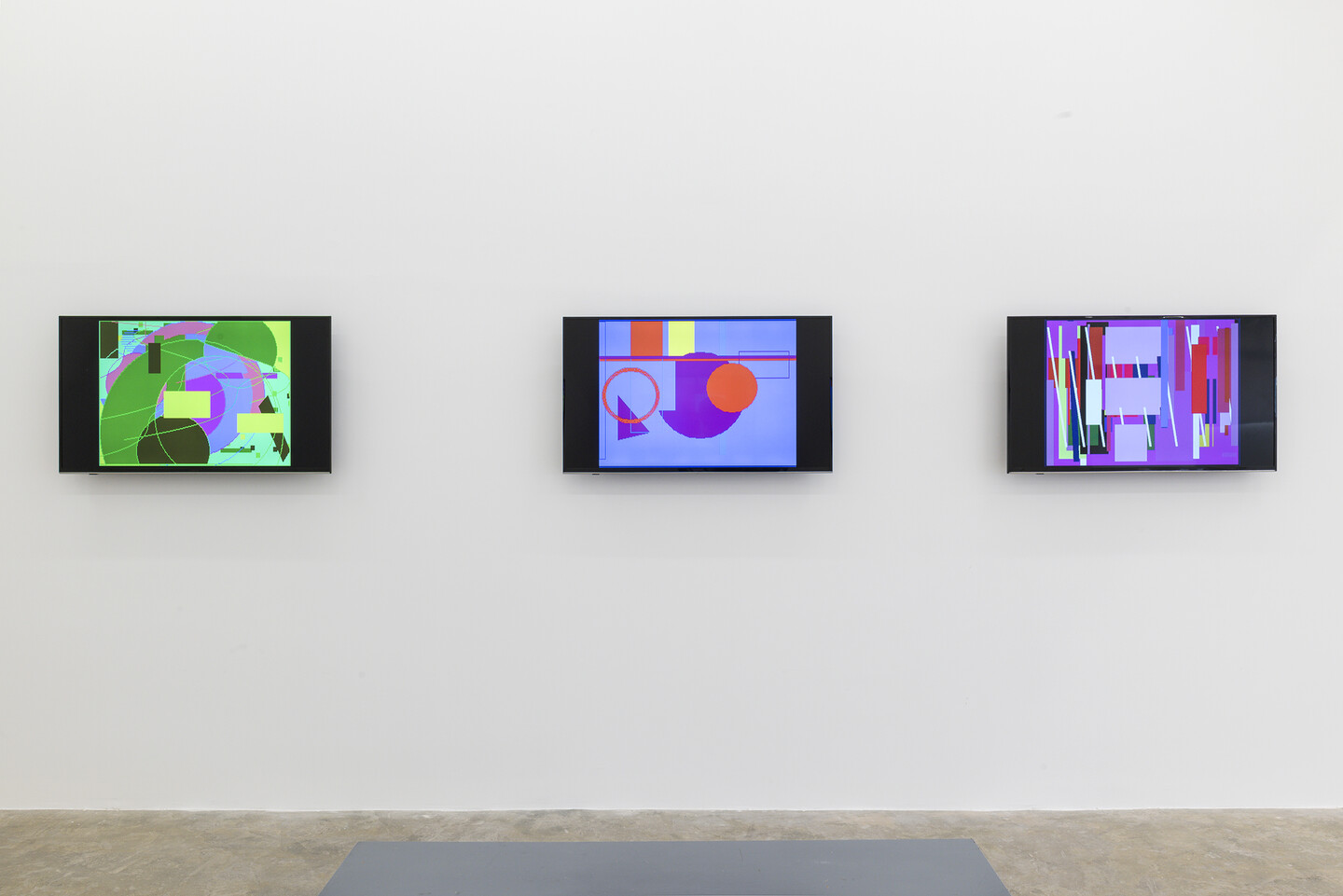
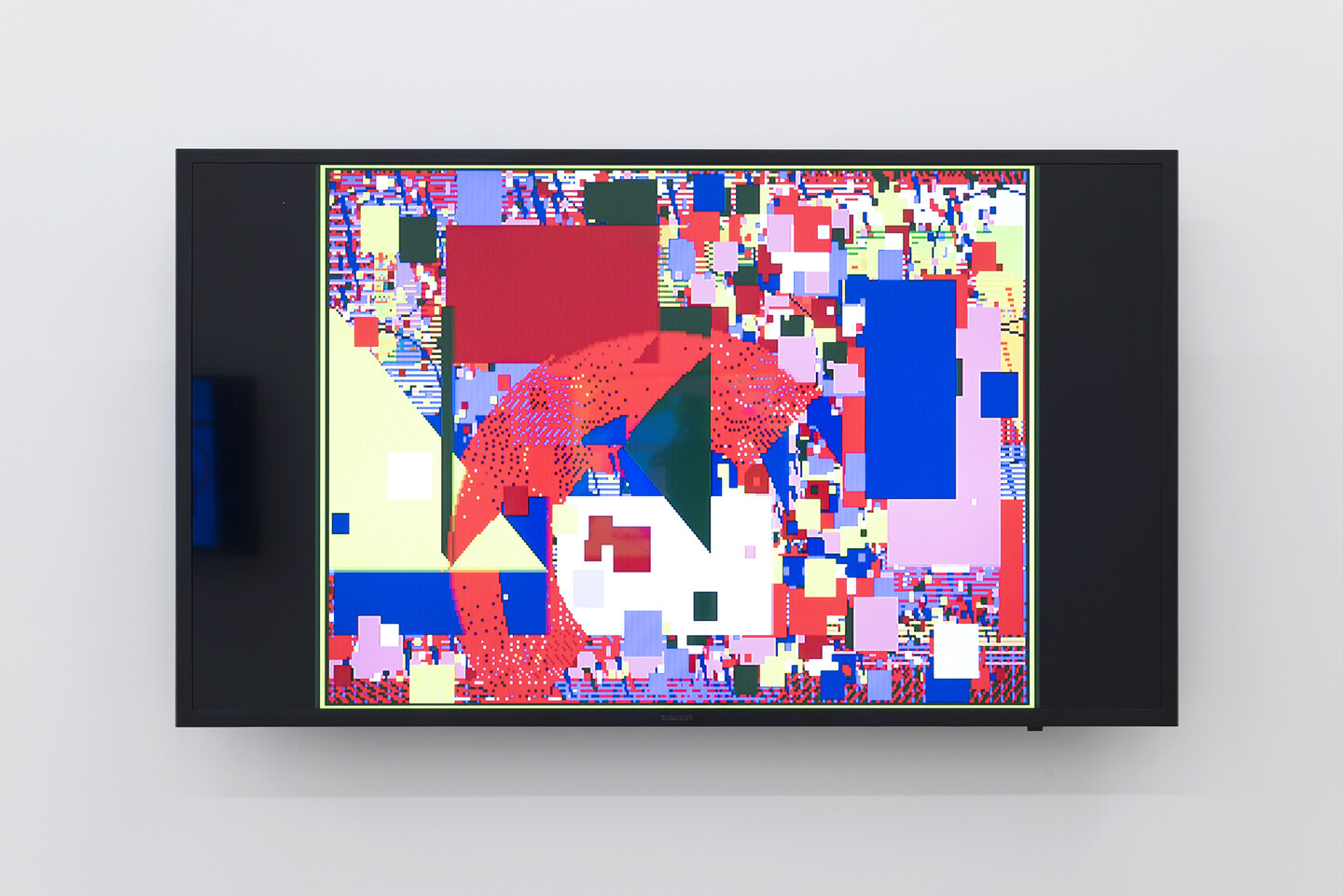
digital film with sound, programmed on an amiga computer, transferred to Apple using an amiga emulator, 1:42 min, Ed. 7+2 AP
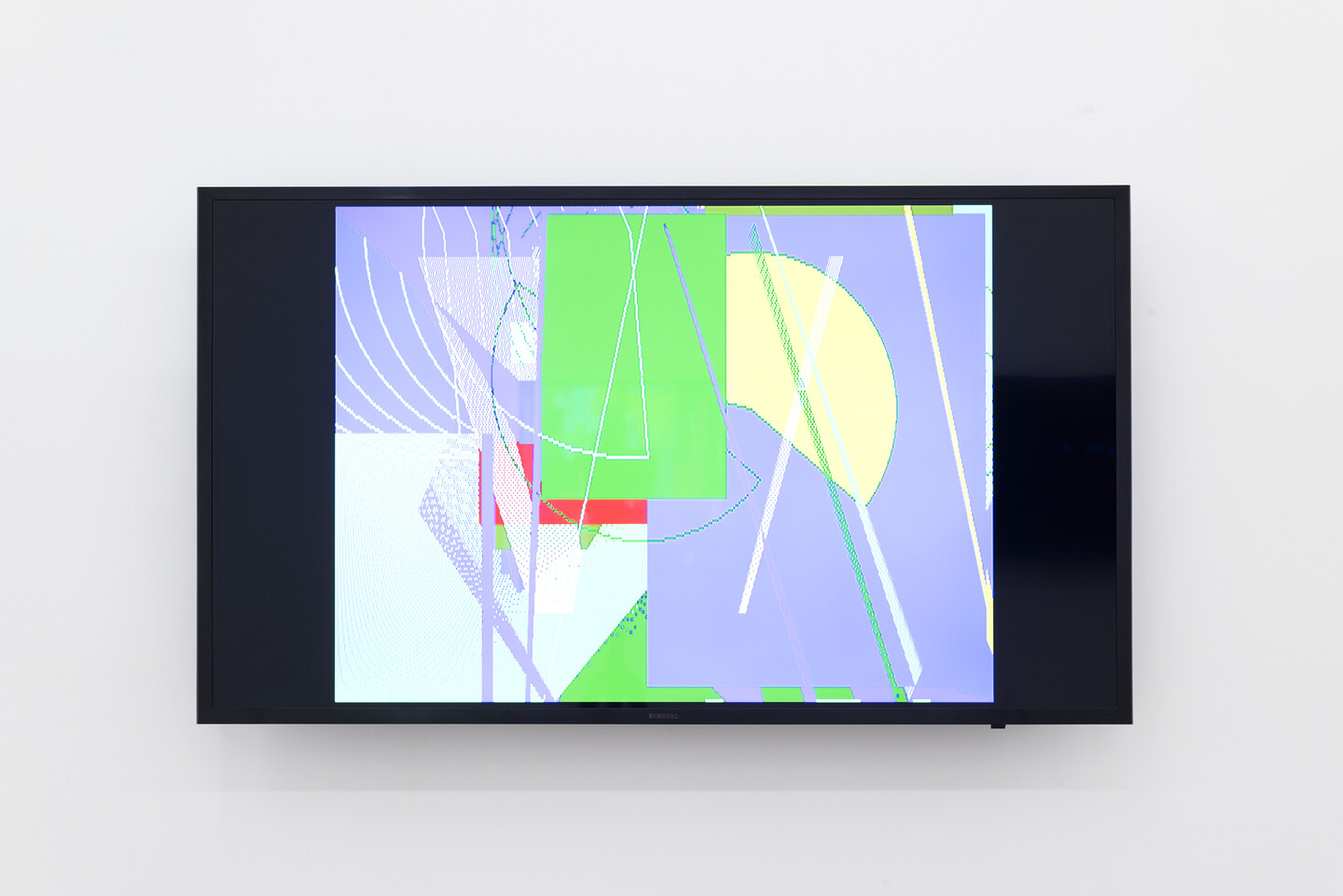
digital film with sound, programmed on an amiga comupter, transferred to Apple using an amiga emulator, 2:30 min, Ed. 7 + 2 AP
While most of her American contemporaries such as Joan Mitchell, Frank Stella, Clifford Still or Ellsworth Kelly use the full surface of a canvas to create a composition, dripping and dropping color and constructing it around central forms, Halaby often adds her curved or geometrical shapes one after the other, like the letters of a word. By doing so, she references ancestral techniques of calligraphy or arabesques using triangular shapes, squares, circles, or dots to devise her own alphabet. What seems at first glance like a spontaneous explosion of colors is in fact a systematically -almost mathematically- scripted composition. Halaby seems to be “writing” her paintings, lining up shapes, colors, and energies, that flow into each other as if following a wandering thought that does not recognize the canvases borders as a limit. Her paintings feel like a galaxy of colorful sentences that overlap, change directions, and explode into a vibrant narrative captured through abstract expression.
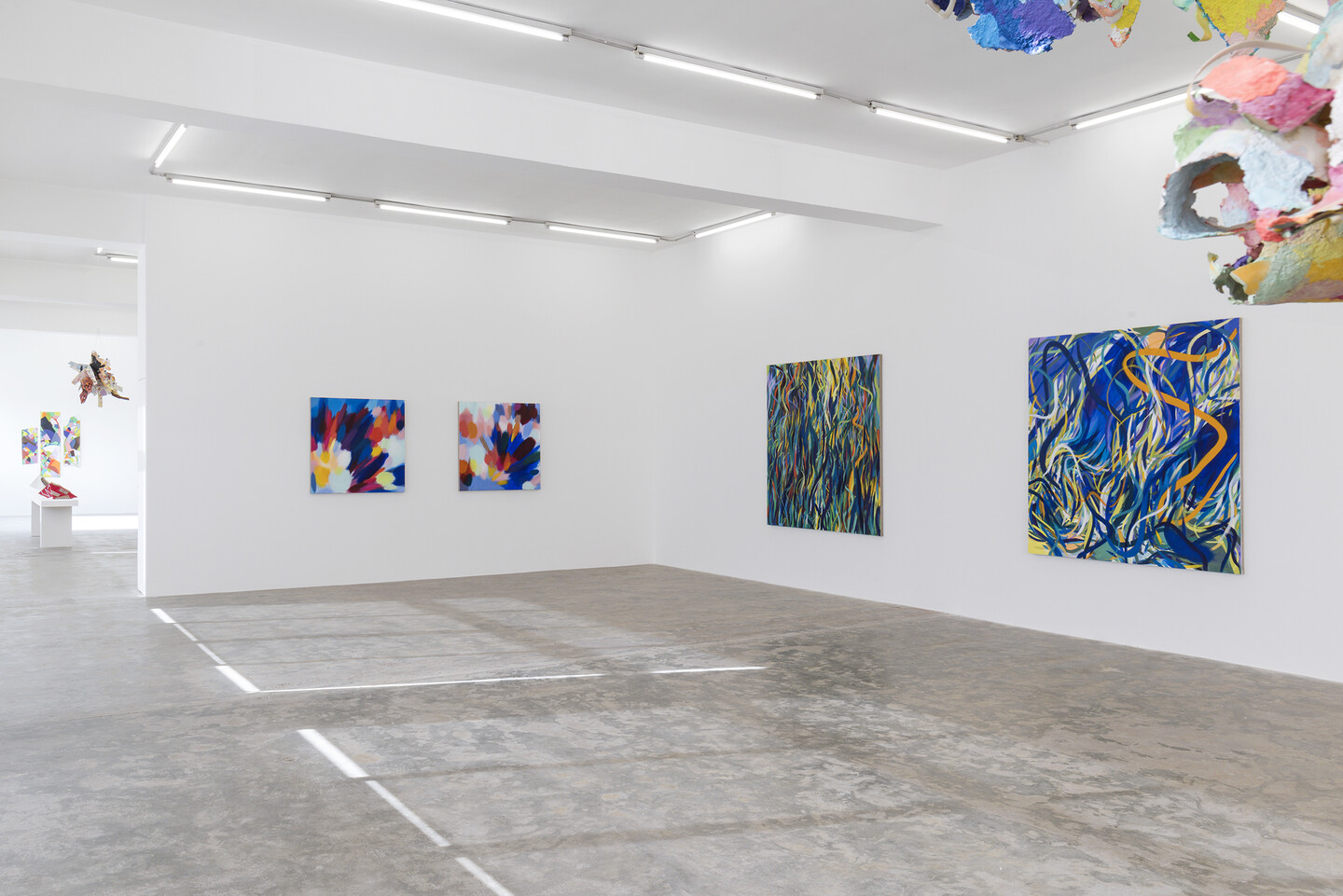


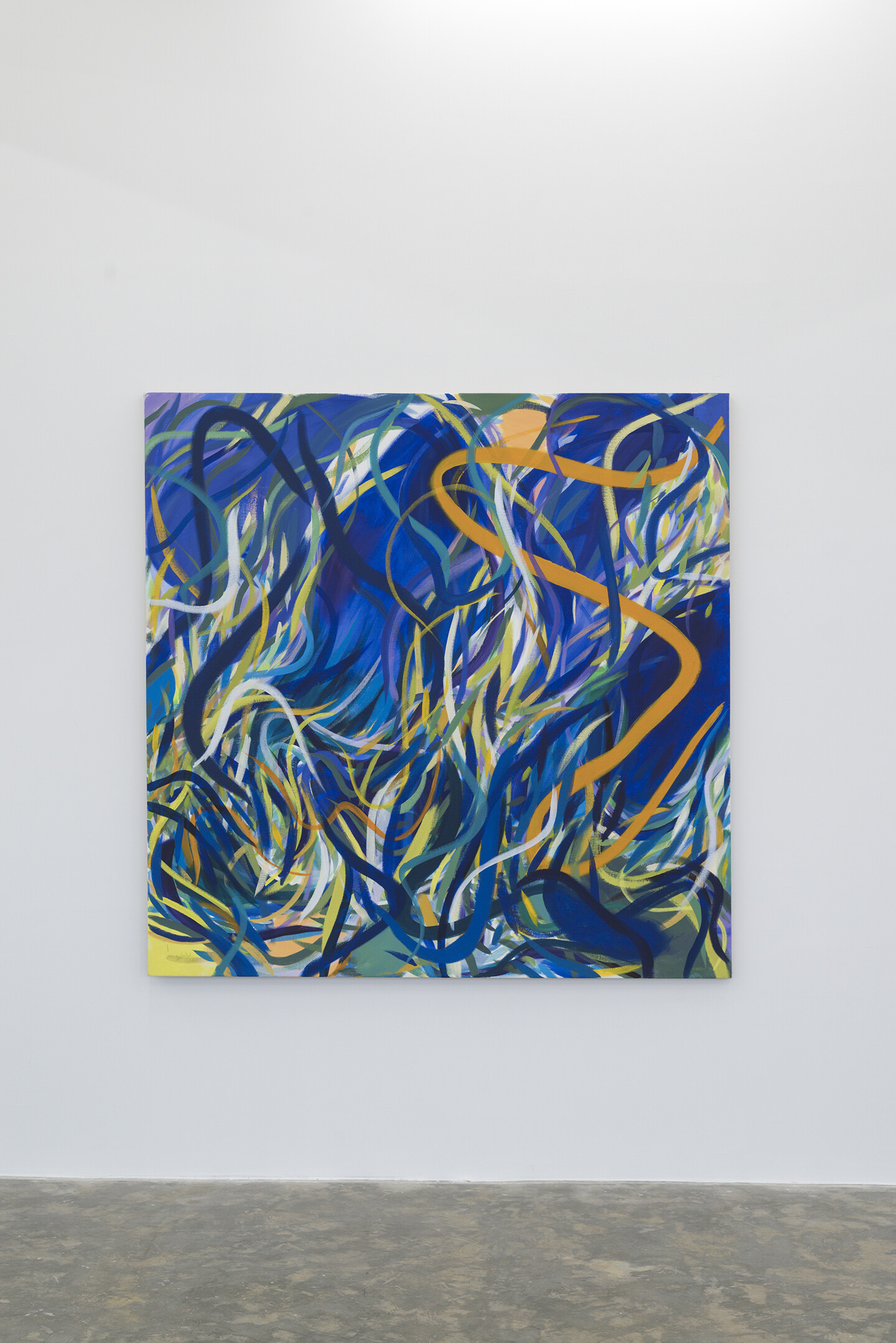
Halaby constantly foregrounded works and techniques, and, in retrospect, was at the avant-garde of artistic production throughout her career. In her work, she manages to capture her biographical and political history, while acutely grasping the very essence of abstract painting.
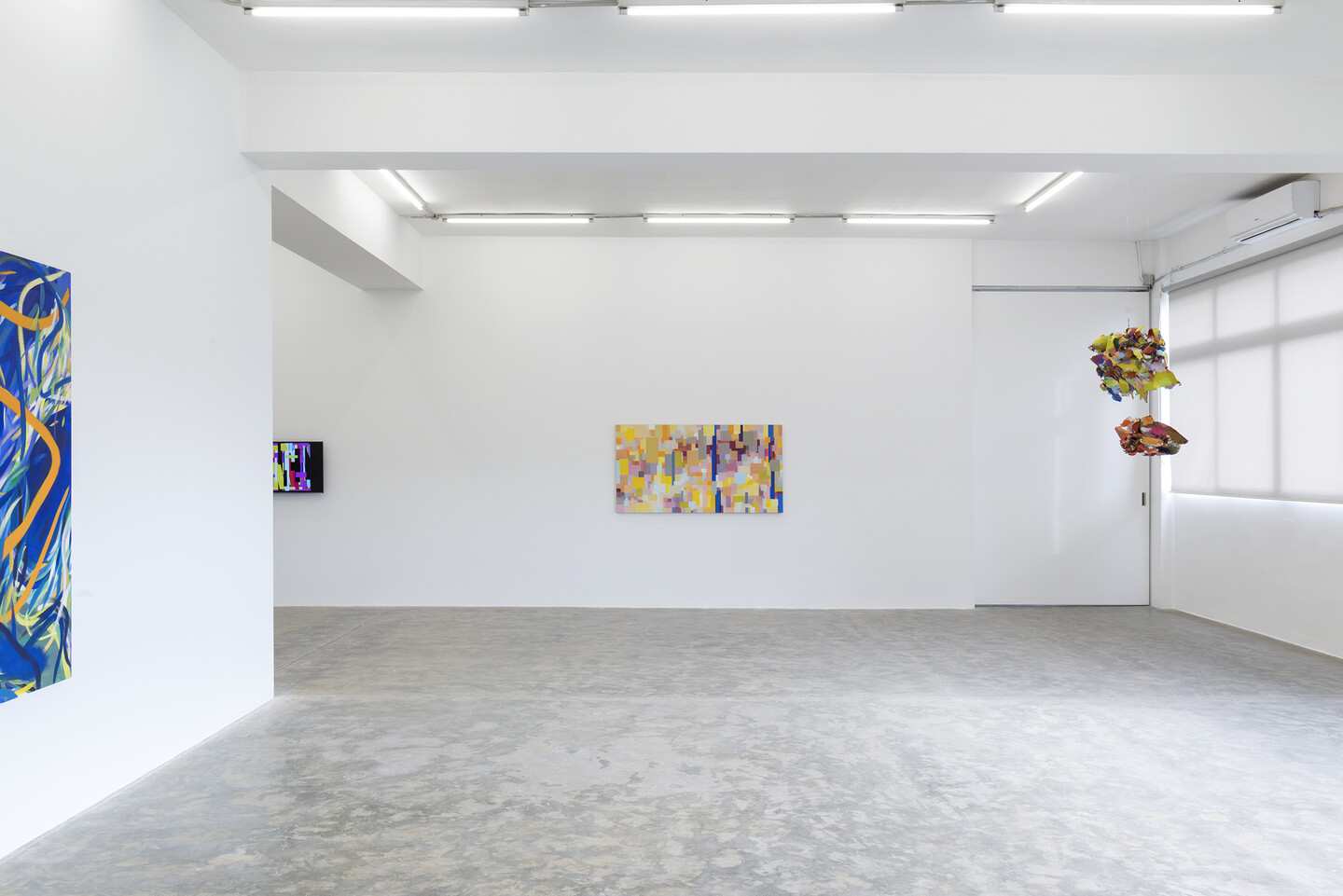
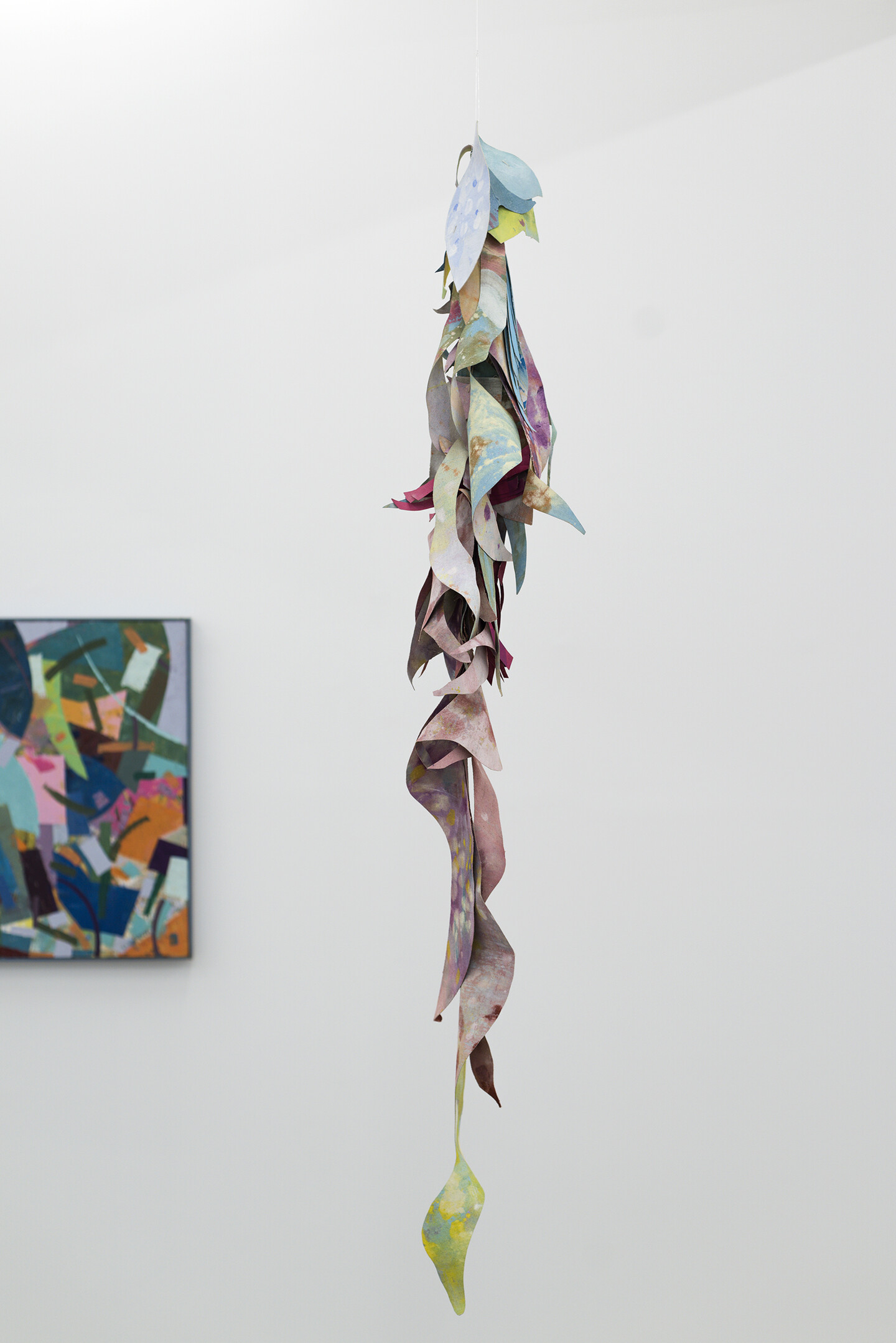
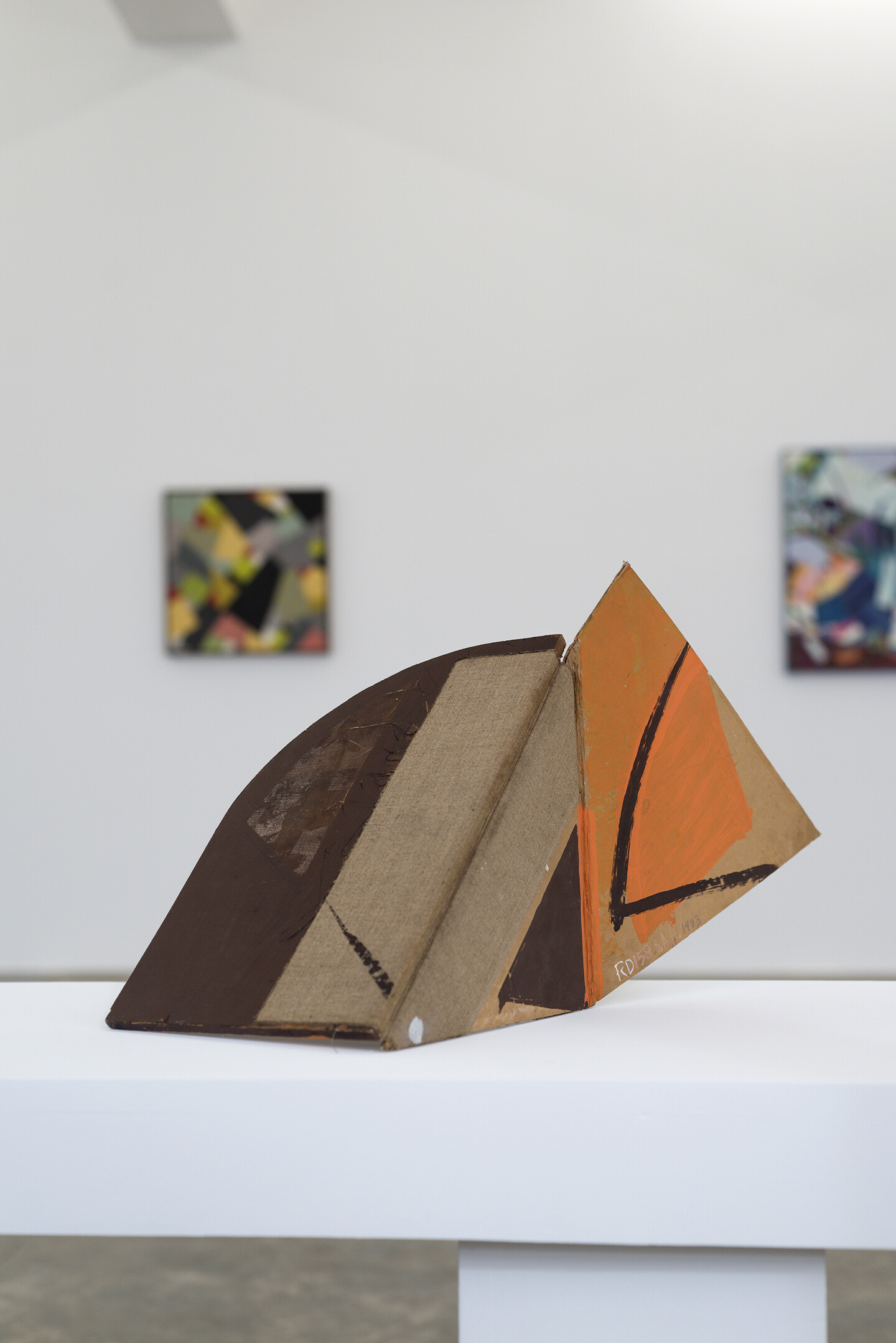
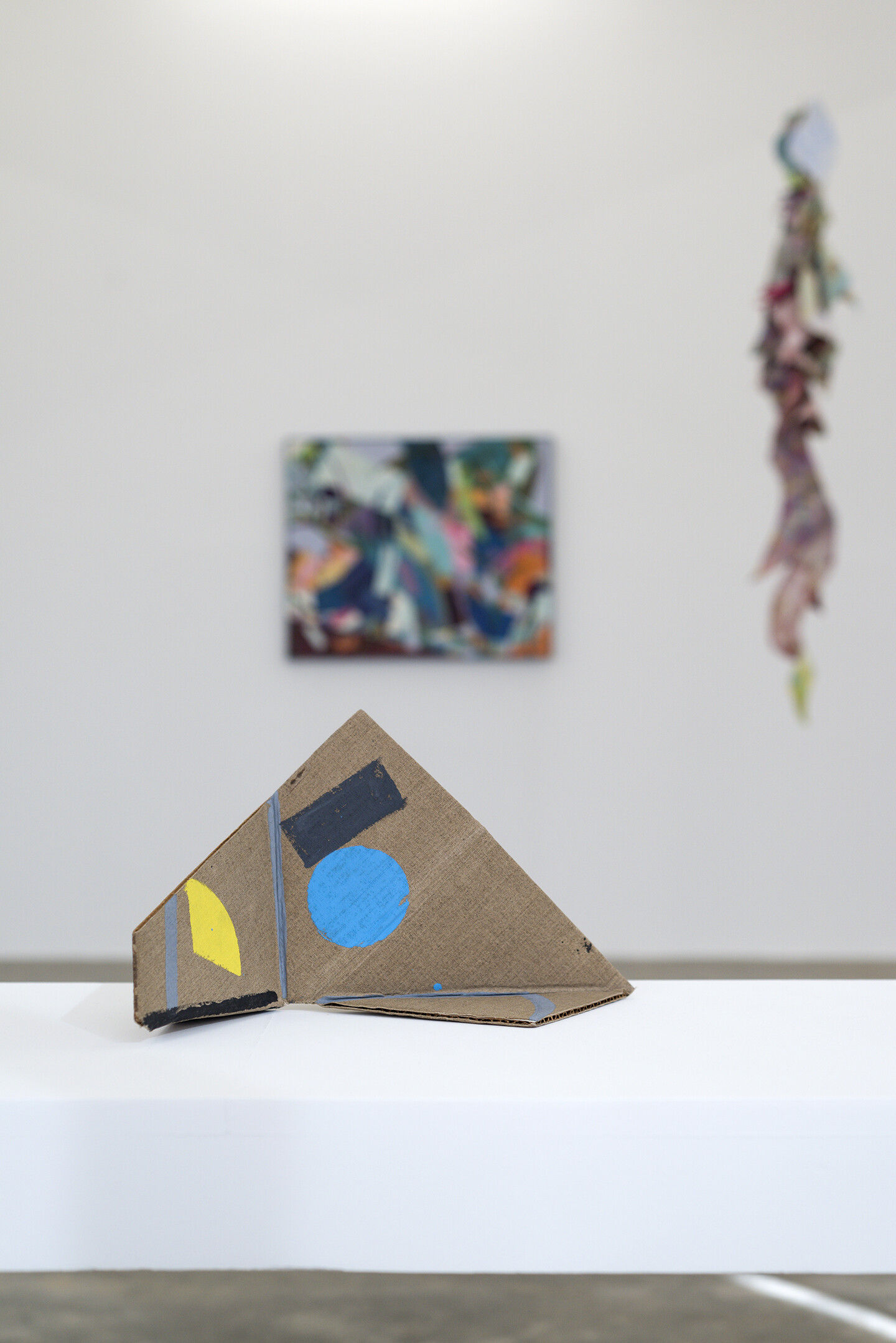
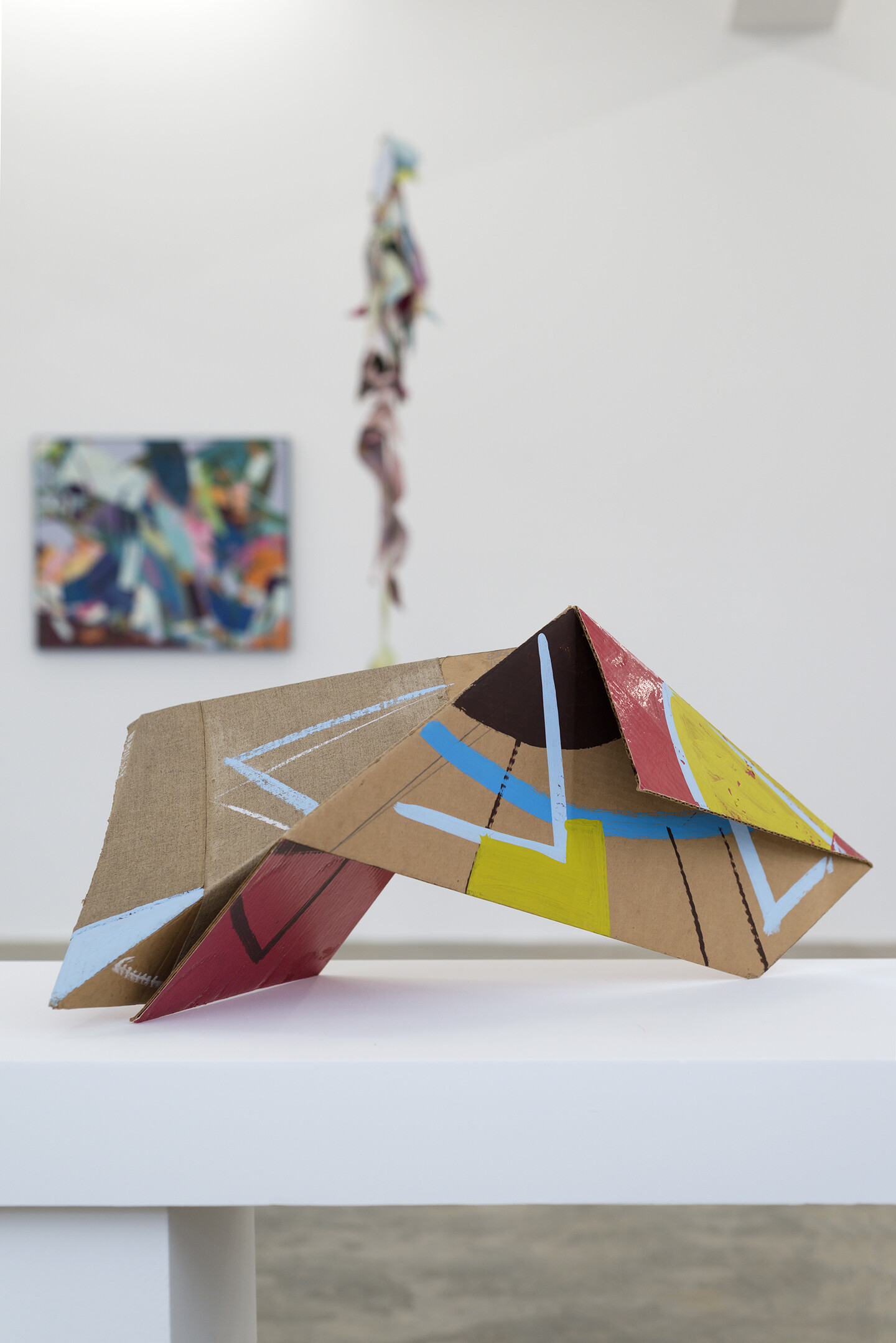
FARID HADDAD
pour l'âge du Liban
January 12 – April 15, 2023
Farid Haddad is a Lebanese-American artist who came of age in the years preceding the Civil War in Lebanon, and during a pivotal moment in Lebanese and Arab Modernism. This exhibition represents Haddad’s work as a vital chapter in the story of abstraction and minimalism in the region. For the Age of Lebanon spans the artist’s early works, 1971–1977, and his most recent works, 2017–2022.
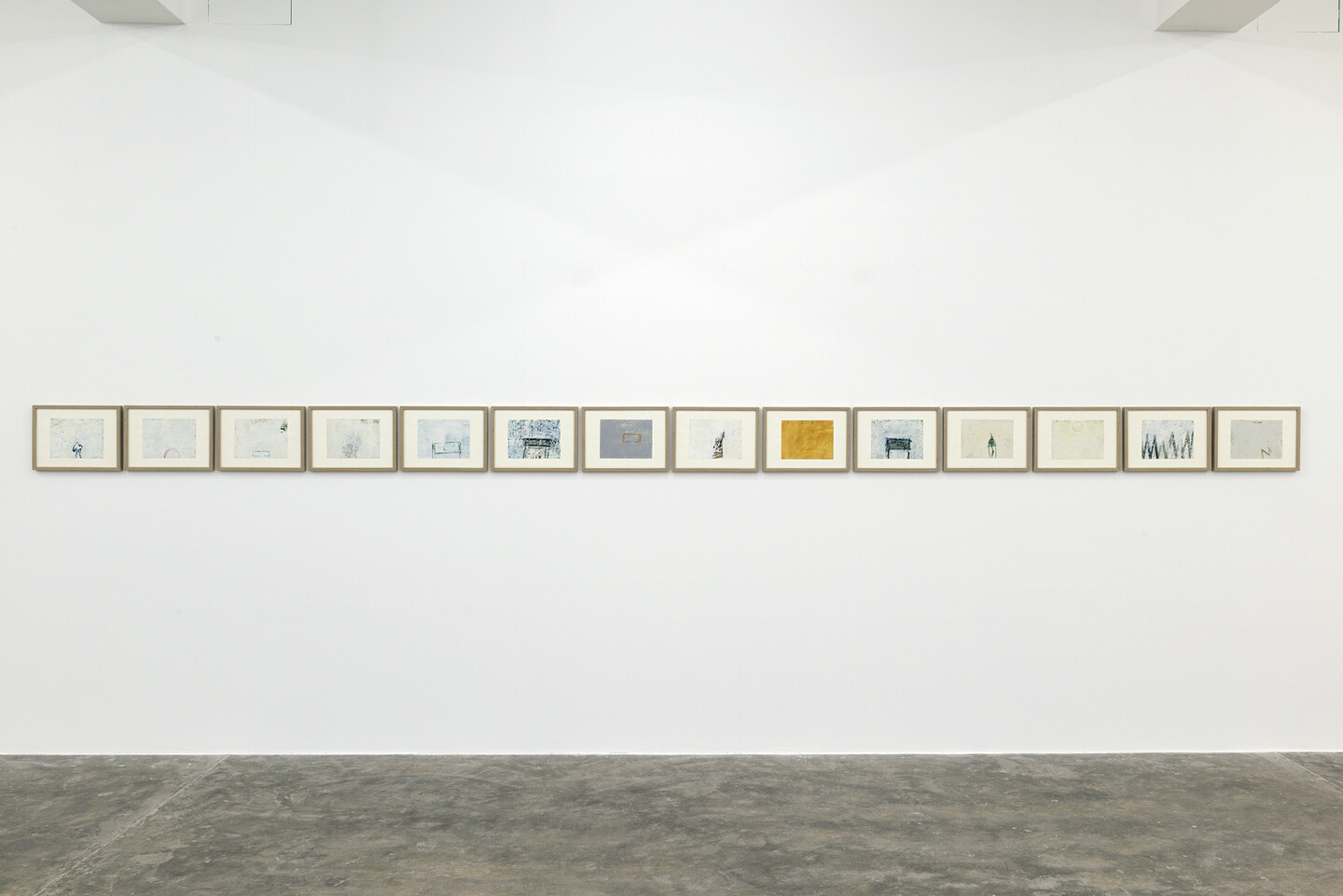
The exhibition is named after the painting-collage work (in nine parts) “Où veux-tu que je m’en aille?” (pour l’âge du Liban) (2018-2019). Haddad’s collage works are a culmination of his lifelong exploration of abstraction, and his sustained conversation with color, shapes and forms. Over the years, he has developed a strict process of painterly composition that comes together through extensive preparation. Each collage work starts out with a foundational painting using acrylics, oil, gouache, watercolor, graphite, among other media. The paintings form the basis of a stencil cut and paste technique. Multi-shaped painting fragments are carefully reassembled into a new whole. The compositions themselves become a measure of time, each taking up to several months to complete.

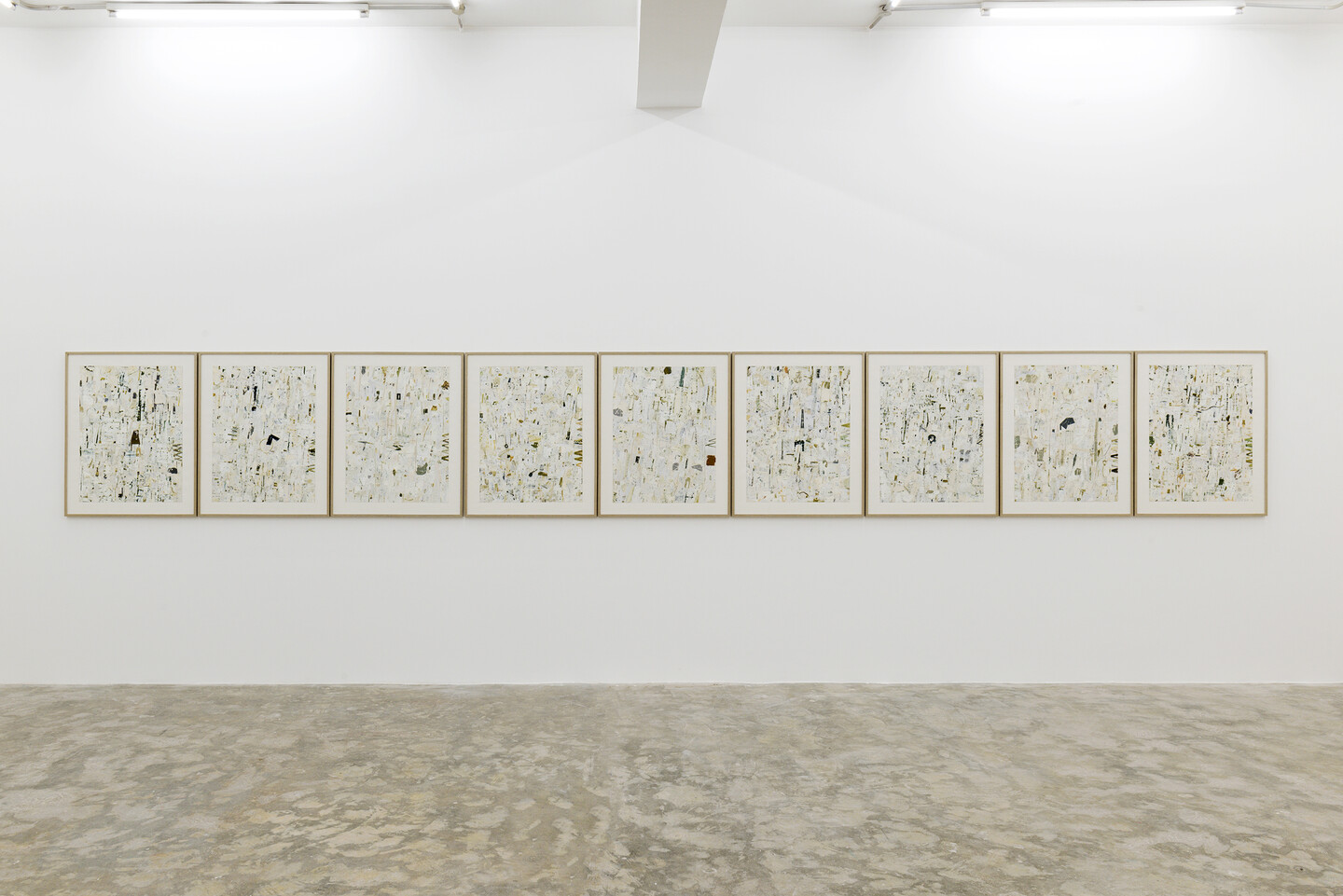
The collage works are an intriguing time portal. Each work is an index of unique signs —shapes, colors, gestures—that have cumulatively developed throughout Haddad’s practice. The grammar of irregular shapes, arcs, zigzags, demonstrates a striking amalgam of memory and geometric sensibility. When asked of his technique, Haddad will assert “I don’t have a formula, I don’t have a story.” His work emanates a certain quality of feeling, of a situation, landscape, subject, or sense of time.
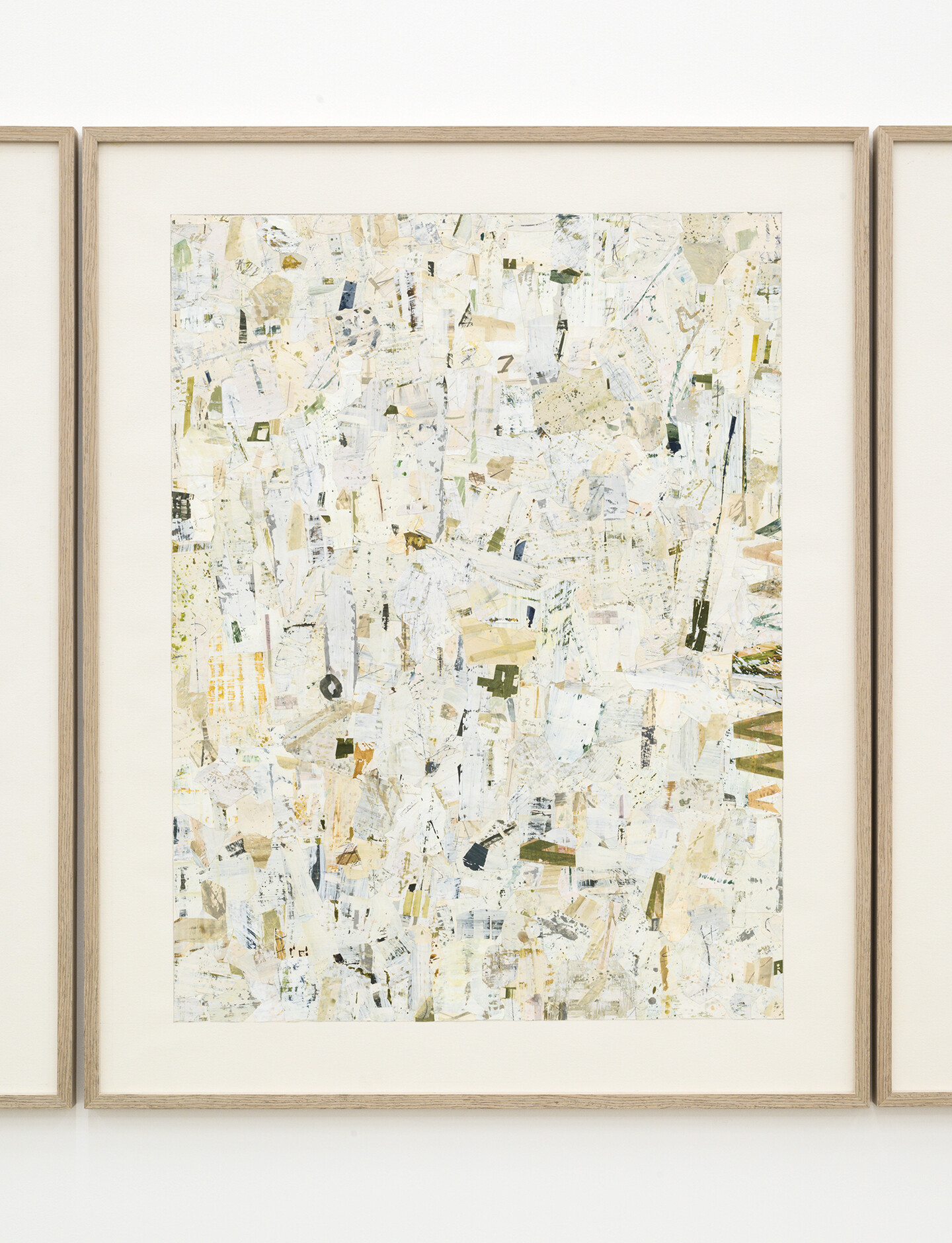
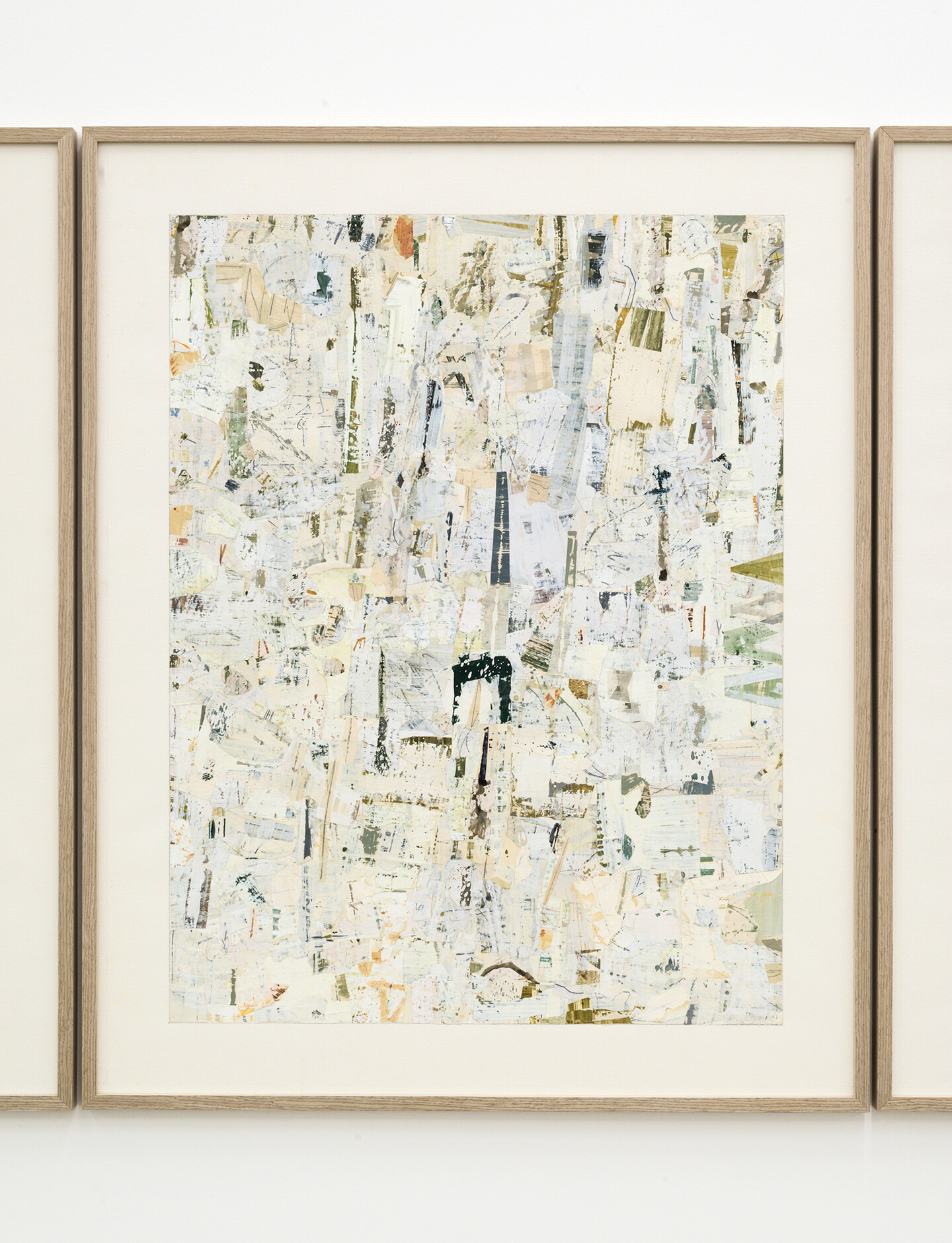
The year before Haddad’s 1972 residency in New York City on a Fulbright-Hays Foreign Grant, he produced the Summer Series, bold and expressionistic gouache and pencil drawings. Harsh brushstrokes and dynamic fields deliver works that are tumultuous and emotionally charged. These lyrical experiments in abstraction were originally shown at the Sultan Gallery in Kuwait in 1972 where they were observed to have been ahead of their time. The vital energy of the Summer Series bursts forth in Haddad’s works from 1972, all of which are on view here for the first time.

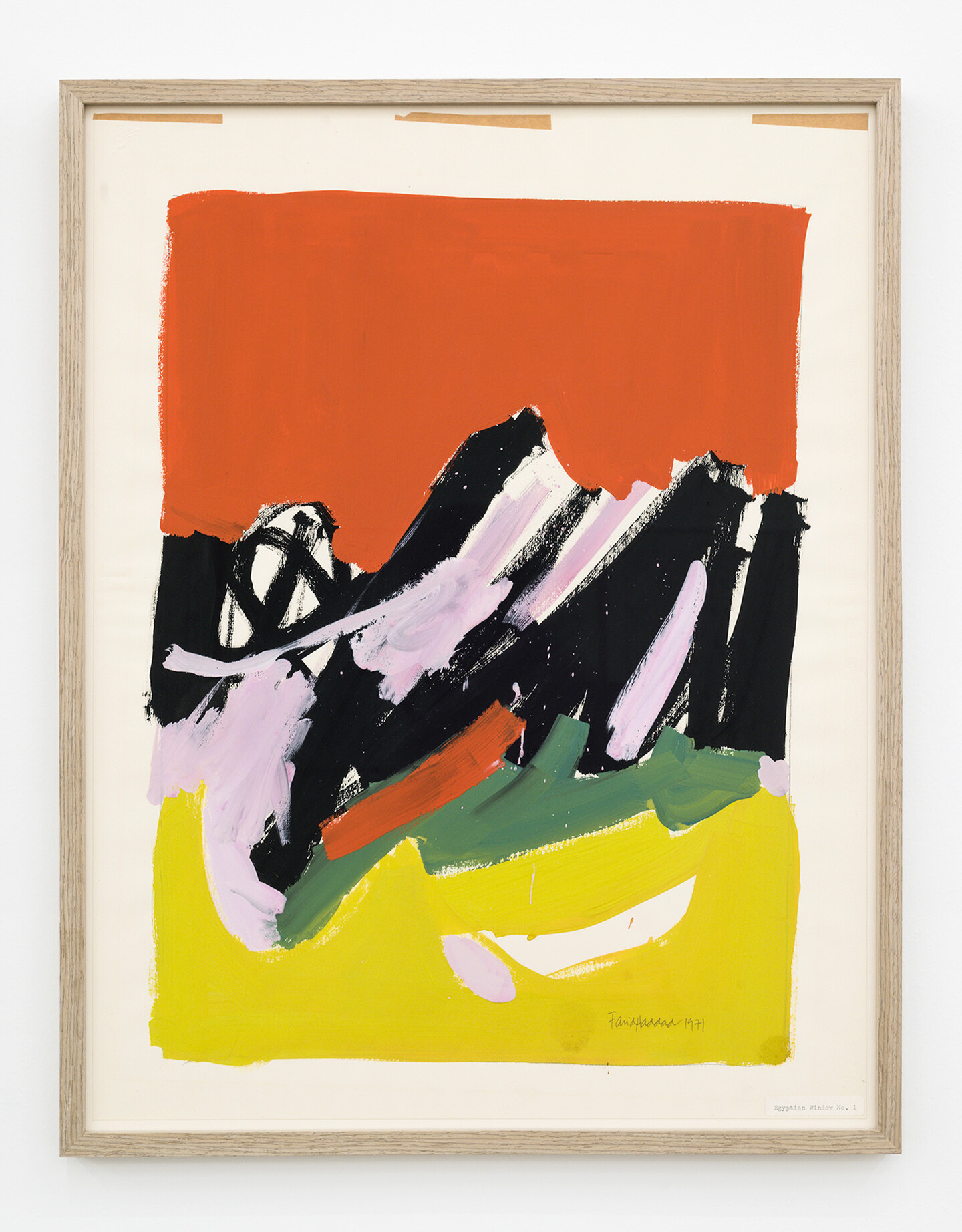
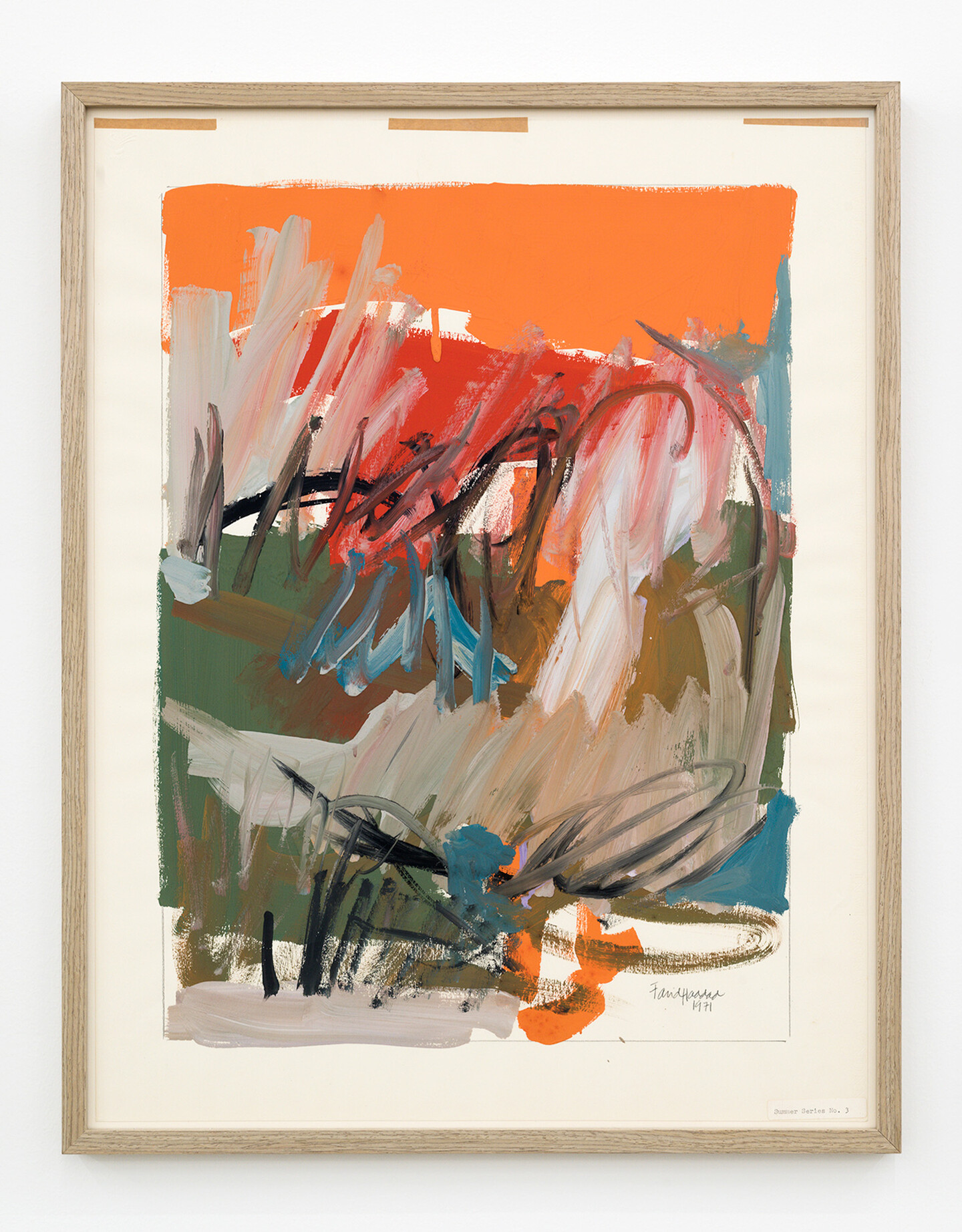
Selections from multiple series of drawings (in graphite, gouache, pencil), and lithographs, prefigure his later works on color and geometric abstraction.
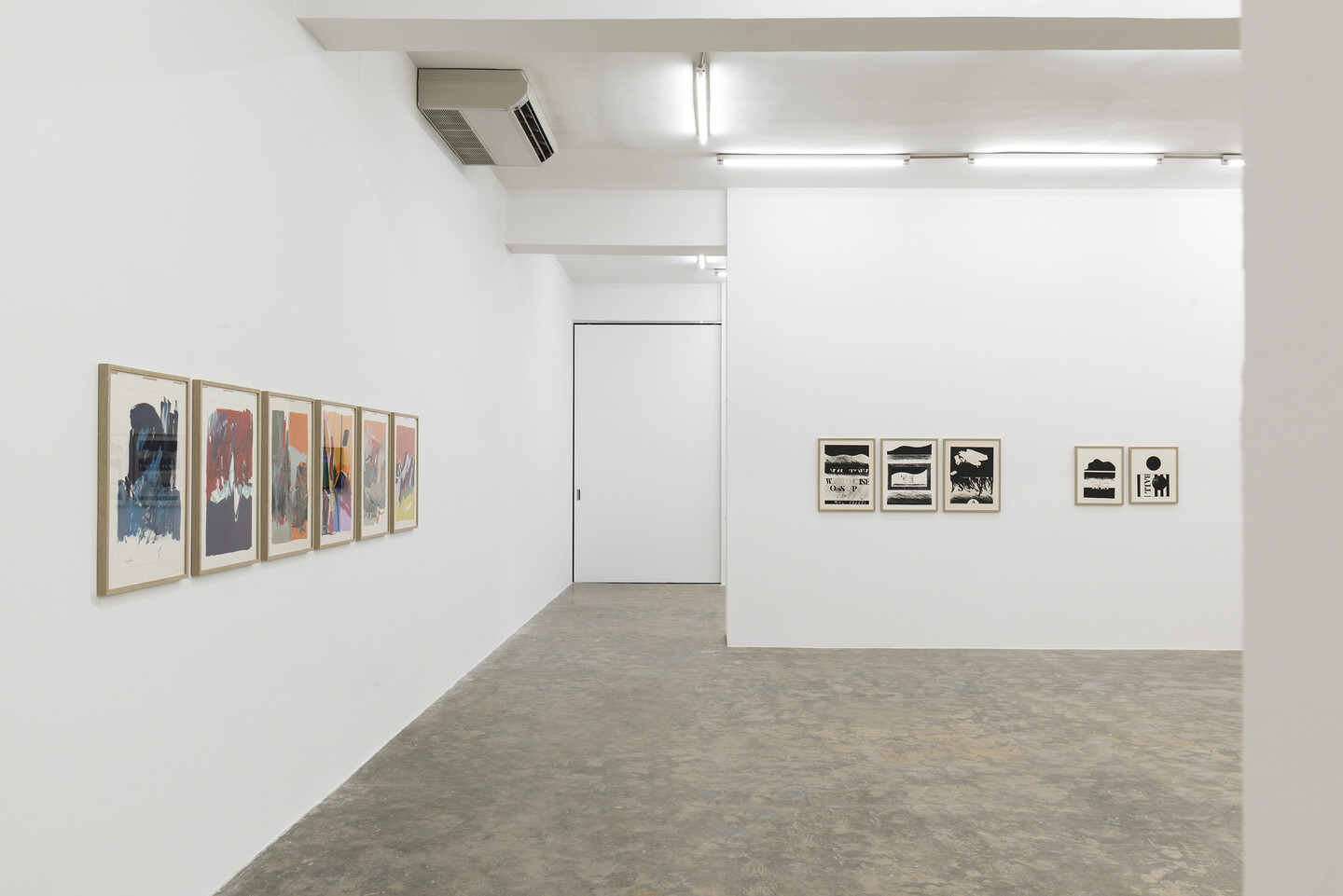


While Haddad’s early works evince his interest in minimalism and constructivism, they also reveal his own reckoning with the political sentiment in Lebanon and the Arab world during that time, as expressed in the titles of his works: LIBERATION, OPPOSITION, FLAG, AFFILIATION, … Those words are rendered typographically through stenciling, and are combined with symbols, e.g., a French flag, a black square, and rough gouache and graphite rendering.
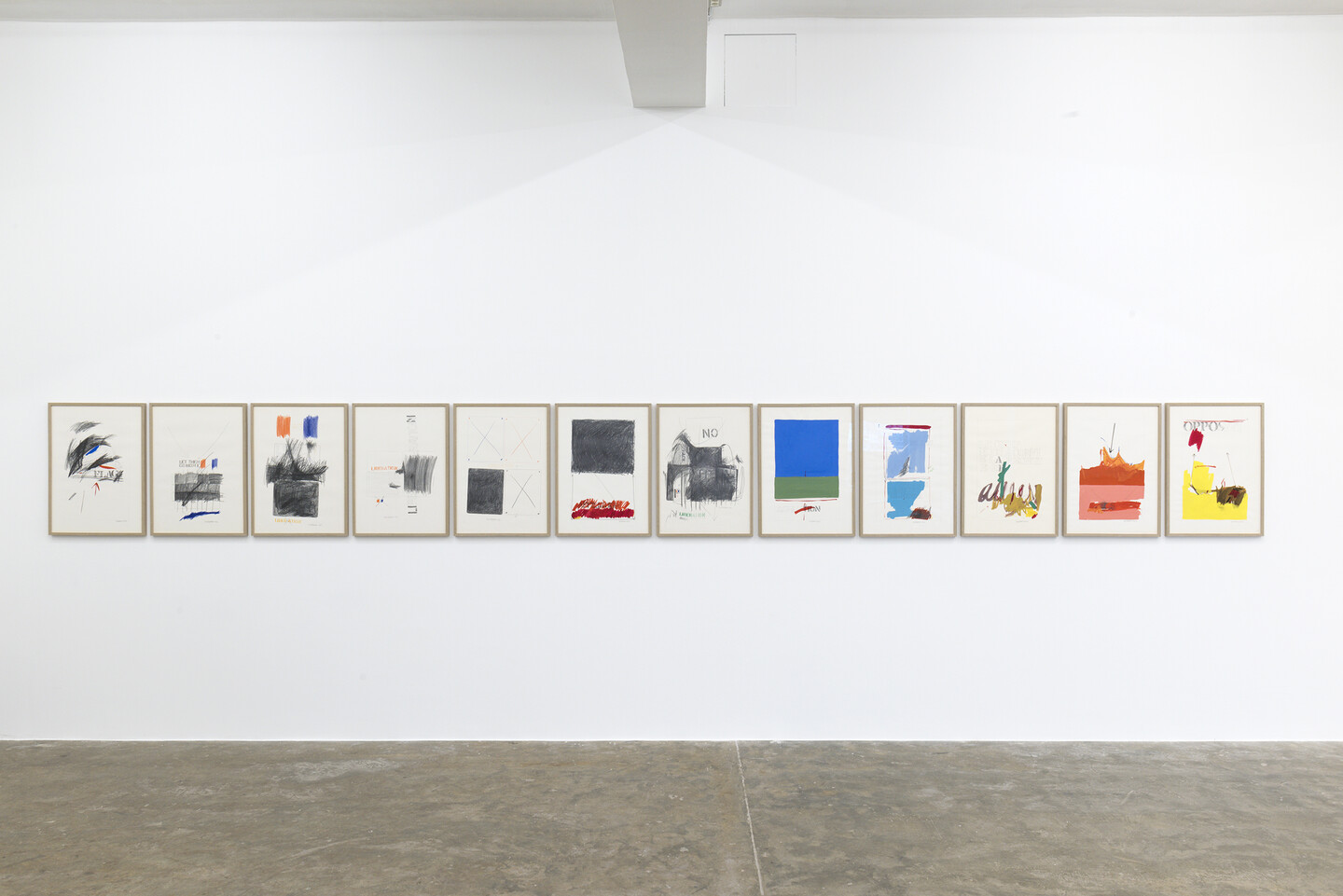
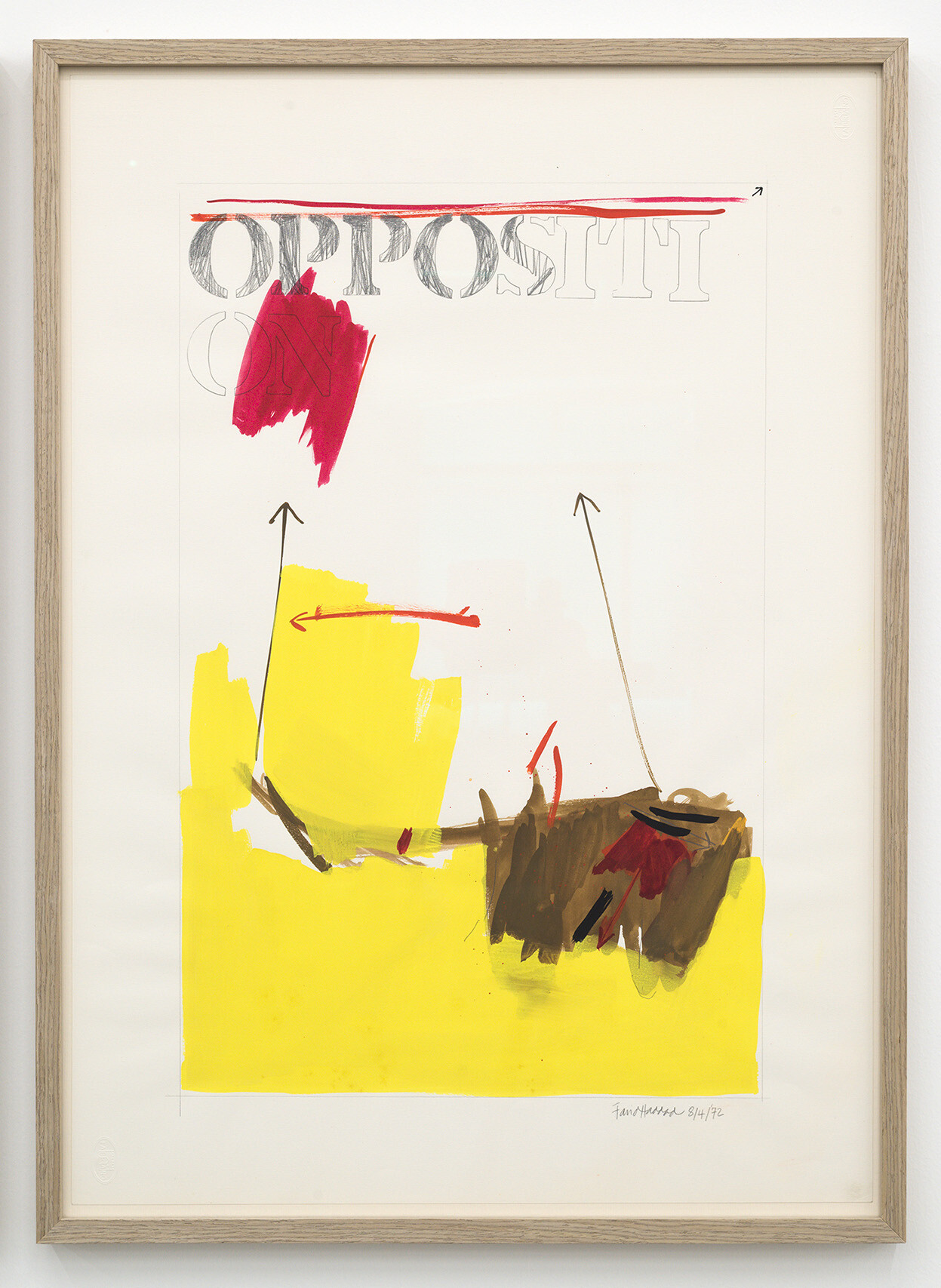
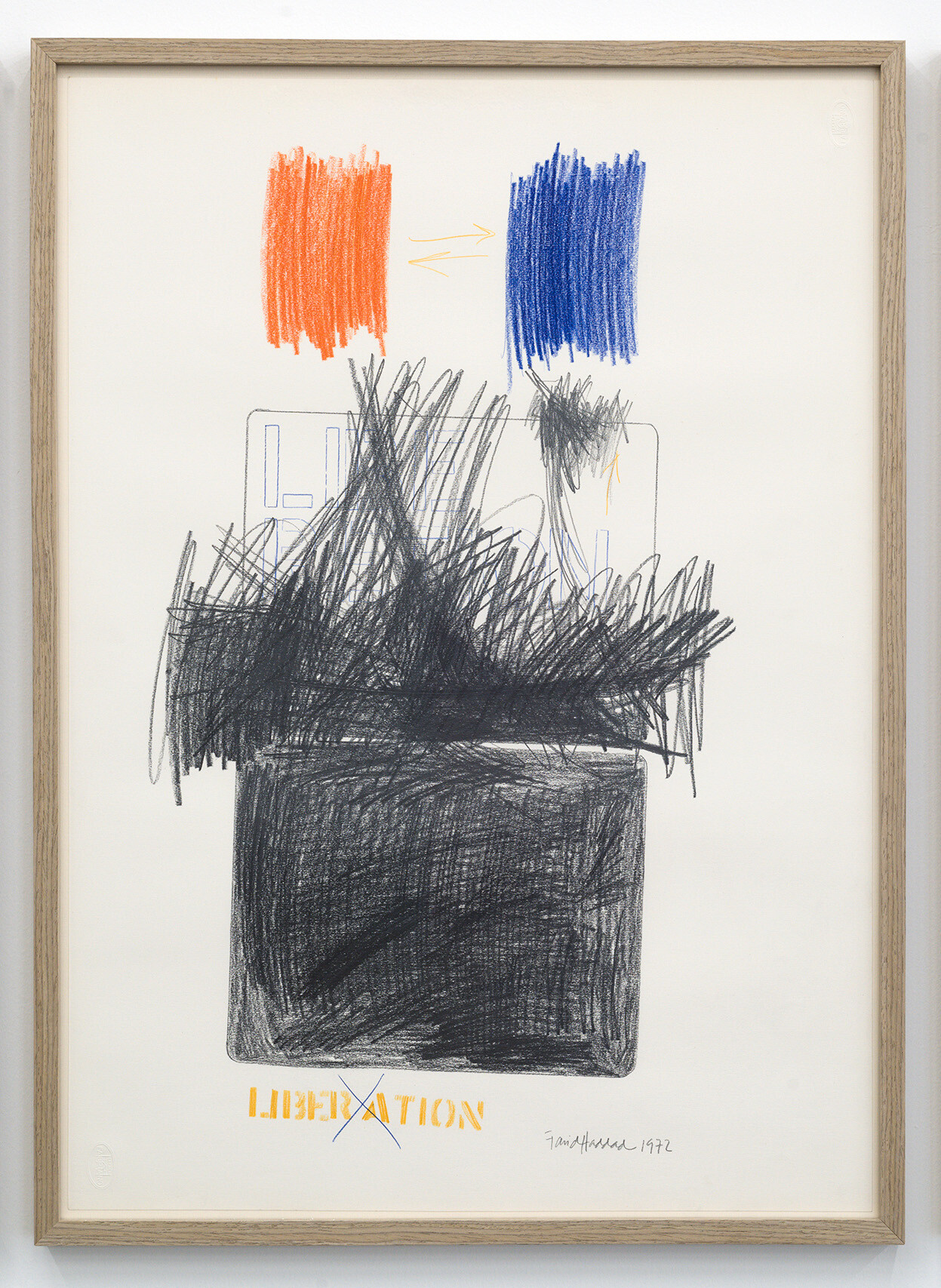
Compositional elements migrate from the drawings to Haddad’s large-scale “transitional” color field paintings (all Untitled, 1977). The elements include the horizons that break up the canvas, lines, cross grids, triangles. Eruditely painted, the gradient color fields are reminiscent of Op Art, the brushwork of Impressionism, the works are structural, colors and shapes are manipulated with extreme precision. Haddad’s sensibility for color and composition lends his works an unparalleled poetic quality.
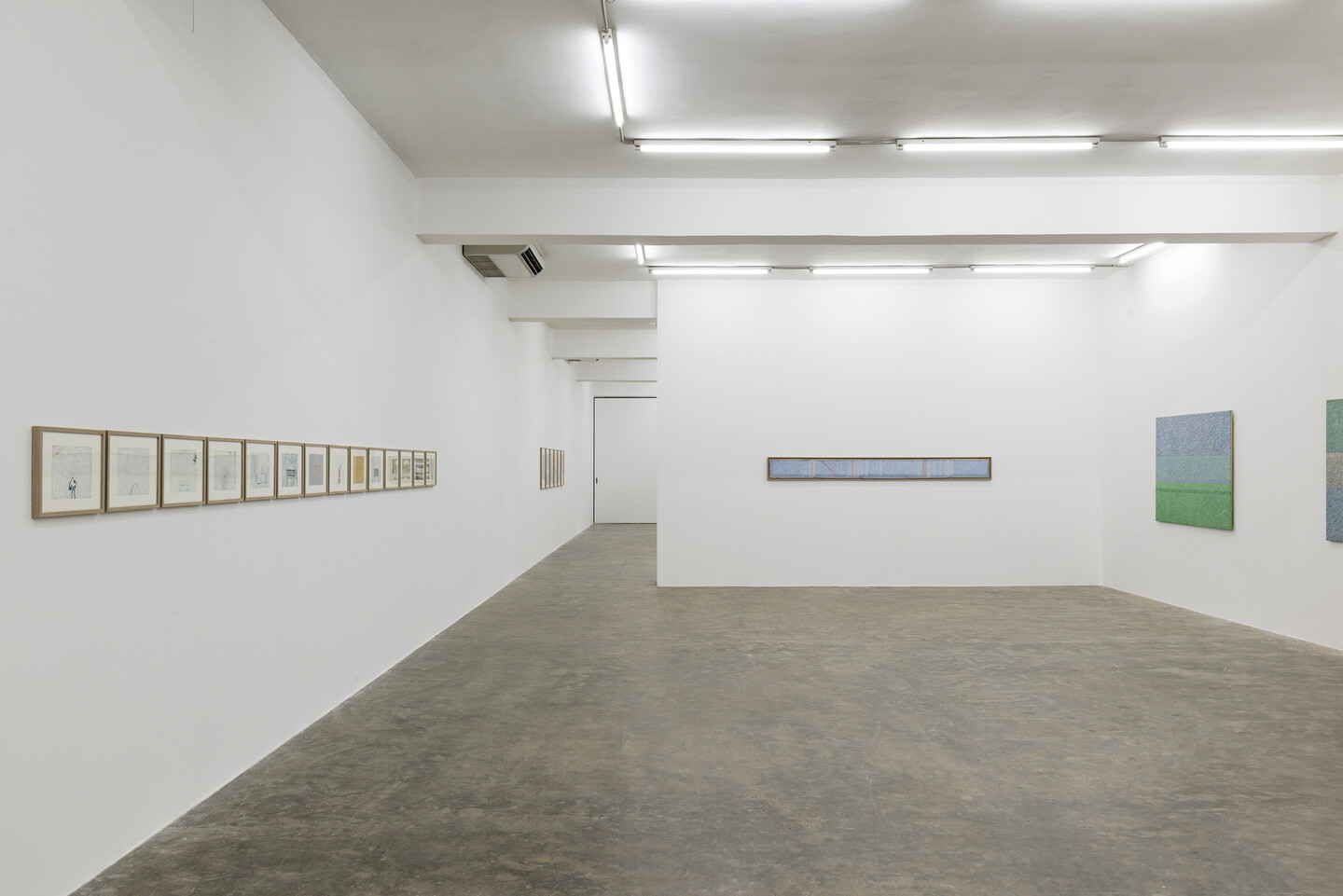

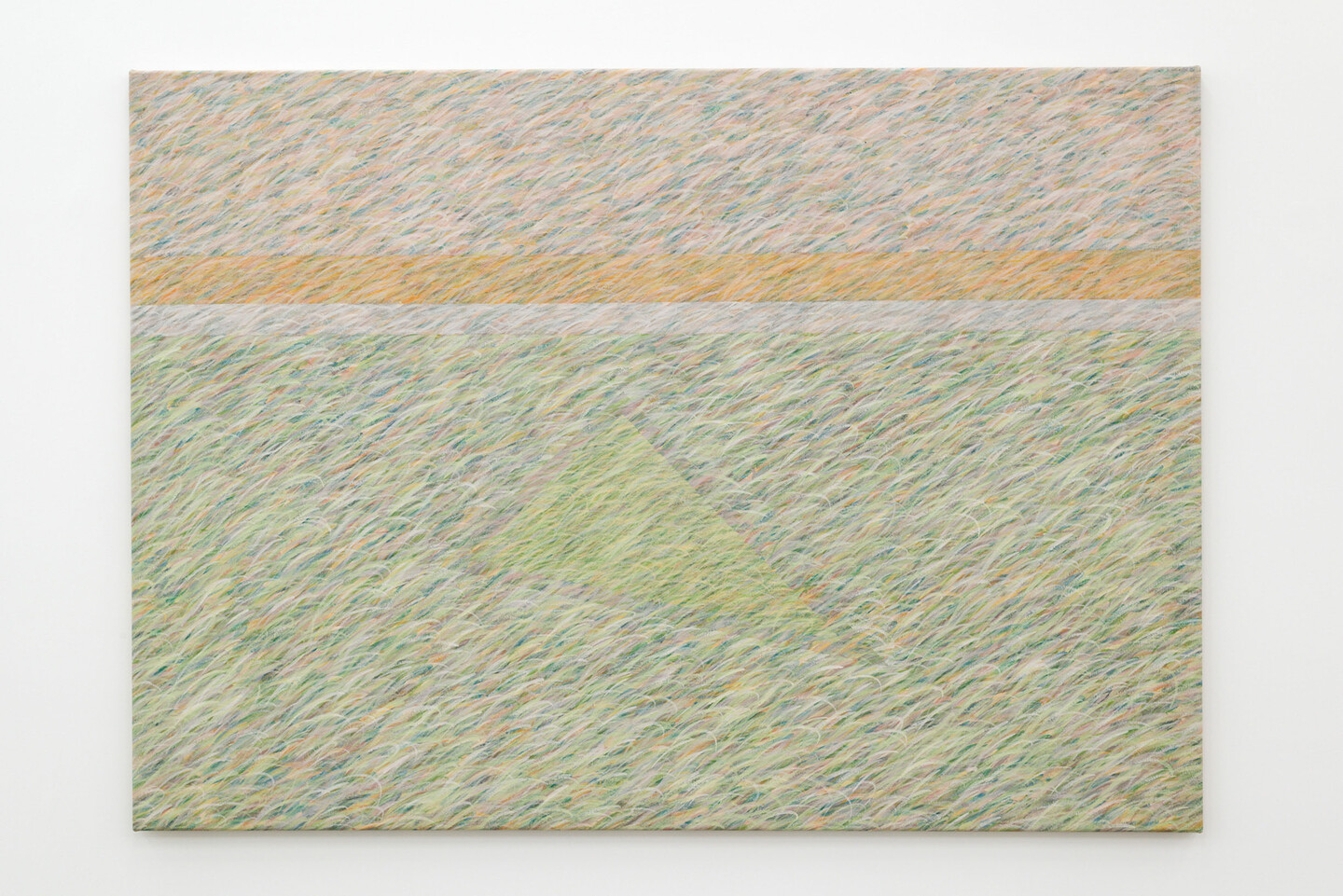

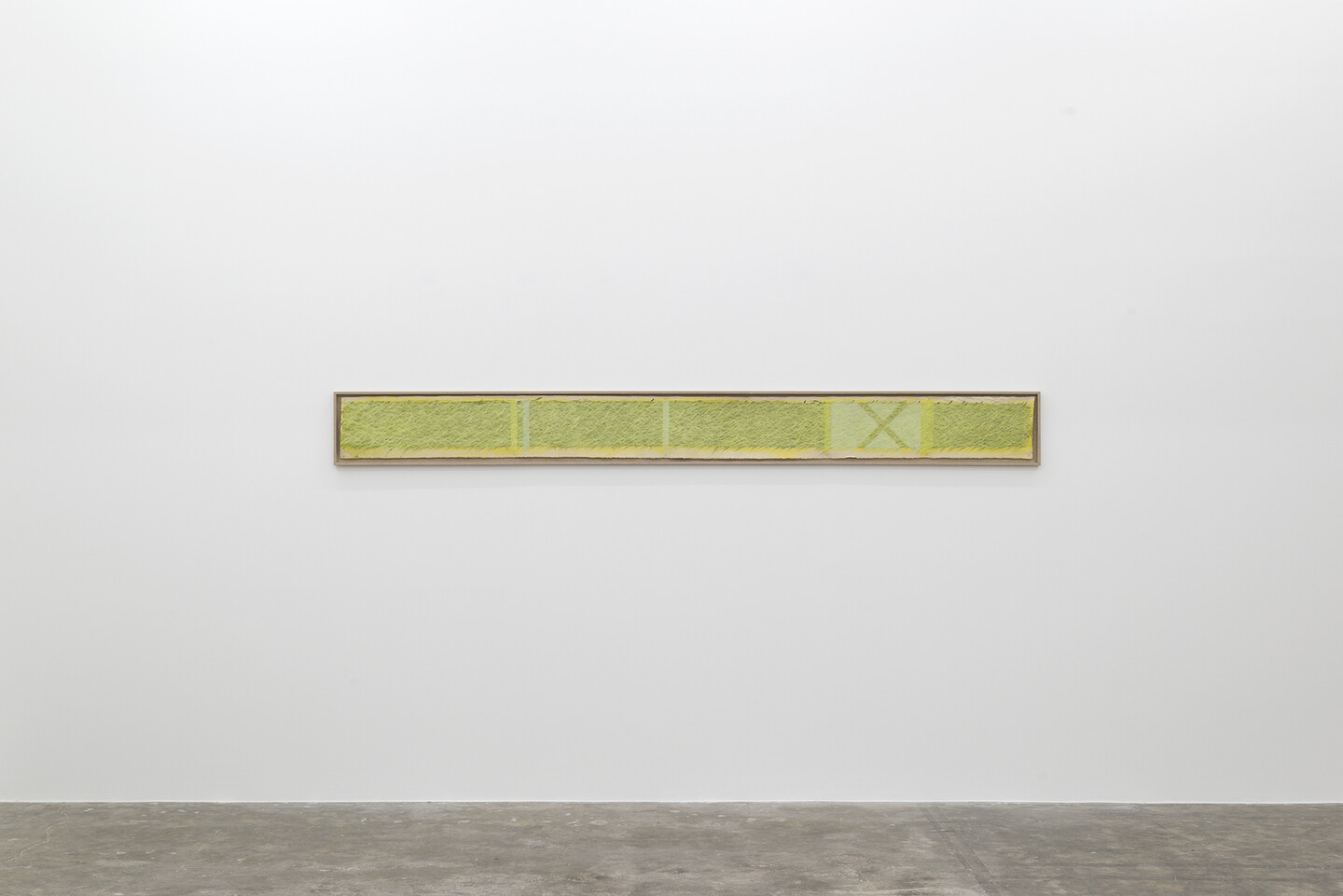
The brilliance of the work is in the viewer’s experience of it, the challenge it poses to one’s perception and perspective.
- Text written by Sarah Rifky